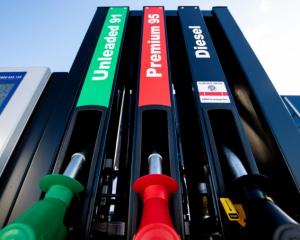
Port Otago has spent upwards of $70 million in recent years on infrastructure and maintenance and has proposed spending "tens of millions" deepening harbour channels to attract larger new generation ships, not including almost $9 million for the past year or the forecast up to $6 million this financial year.
Much of the infrastructure spend to keep Port Otago as the preferred South Island port of call comes from bank debt financing, but the present global credit crunch and market volatility has left major organisations with fewer lenders, who are charging increased interest rates.
Port Otago chairman John Gilks, delivering a summarised annual report to regional councillors for the year to June yesterday, gave assurances about access to funds because of the volatility in world markets at present - including the bankruptcy of Lehman Brothers in the US and separate concerns over the viability of giant insurer American International Group, collectively holding $US1.6 trillion in debt.
"The [Port Otago] group has committed long-term bank facilities in place and is soundly positioned to weather the current upheaval in credit markets," Mr Gilks told councillors.
The committed facilities included a minimum two-year period where banks must lend for the critical capital expenditure programmes as agreed, not 30 days or three months.
"So long as we do not breach agreements, banks must lend within that [two-year] period," Mr Gilks said.
Port Otago's revenue for the year increased from $59.3 million to $62.5 million, on the back of port operations, while its earnings before interest, tax, depreciation and amortisation were down 3%, from $27.1 million to $26.3 million.
Its overall profit was down 29% from $39.3 million to $27.8 million, the latter including unrealised revaluation of investment properties of subsidiary Chalmers Properties worth $17.9 million (if they were sold).
Mr Gilks said the profit reduction reflected the lower levels of the property revaluations, a 9% increase on asset depreciation to $6.8 million and a $600,000 decline in interest rate swaps - a protection against interest rate fluctuations.
He highlighted that for the first time Port Otago assets exceeded $400 million, with an equity ratio to the ORC of 66%, worth $266 million.
Borrowing had been reduced by $15 million and totalled $105 million at June.
However, after the meeting Mr Gilks said a second new tug and third new container crane were likely in coming years, and would cost more than $20 million.
Port Otago attained a record of more than 209,000 container movements during the year, dominated by almost 73,000 trans-ship container movements (which arrive and depart without using wharf facilities).
However, Mr Gilks cautioned the number would not be repeated this year as giant container line Maersk had cut more than 100 calls from Port Chalmers - or 22% of its volume, mainly the trans-ship business.
While noting the decline would still leave this year's forecast at "slightly lower" (170,000 to 180,000), it ranked alongside Port Otago's second-best year and compared well with the "bad old days" in the early 1980s, when 35,000 containers were shifted annually.
Councillors had concerns about the potential for negative effects of the Government's recent rail buy-back and roading services, but Mr Gilks said until more details were known, Port Otago could only look for opportunities within the overall transport sector.












